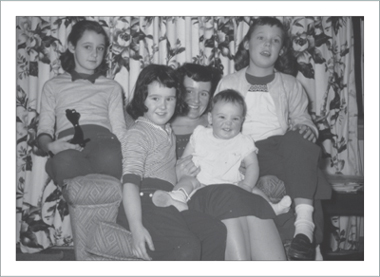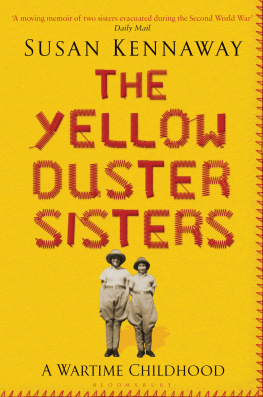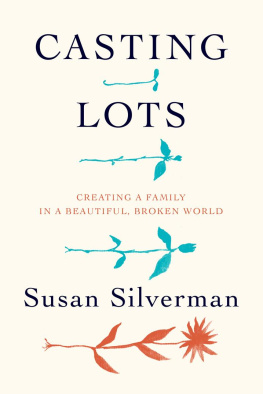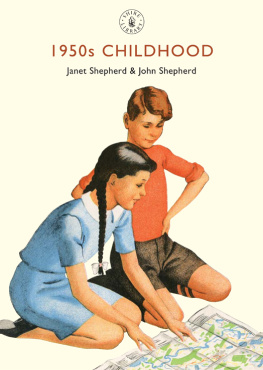Penny Loafers & Bobby Pins
Tales and Tips from Growing Up in the '50s and '60s
Susan Sanvidge
Diane Sanvidge Seckar
Jean Sanvidge Wouters
Julie Sanvidge Florence
Wisconsin Historical Society Press
Published by the Wisconsin Historical Society Press
Publishers since 1855
2010 by the State Historical Society of Wisconsin
E-book edition 2013
For permission to reuse material from Penny Loafers & Bobby Pins (ISBN 978-0-87020-446-3; e-book ISBN 978-0-87020-545-3), please access www.copyright.com or contact the Copyright Clearance Center, Inc. (CCC), 222 Rosewood Drive, Danvers, MA 01923, 978-750-8400. CCC is a not-for-profit organization that provides licenses and registration for a variety of users.
wisconsin history .org
Photos and illustrations are from the authors collections unless otherwise credited.
Designed by Sue Ellibee
Cover illustrations by Linda Takaha
14 13 12 11 10 1 2 3 4 5
The Library of Congress has cataloged the printed edition as follows:
Penny loafers & bobby pins : tales and tips from growing up in the 50s and 60s / Susan Sanvidge [et al.].
p. cm.
Includes index.
ISBN 978-0-87020-446-3 (pbk. : alk. paper) 1. Cookery, AmericanMidwestern style. 2. CookeryWisconsin. 3. HandicraftWisconsinMiscellanea. 4. Oshkosh (Wis.)Social life and customs20th century. I. Sanvidge, Susan.
TX715.2.M53P46 2010
641.59775dc22
2009048004
To our mother, Helen Noffke Sanvidge, who said, Write more stories.

Contents
D ad came back from World War II and married Mom, and the four of us were born in Oshkosh, Wisconsin, between 1948 and 1958. Oshkosh is where we rode tricycles, twirled hula hoops, and opened new boxes of crayons on the first day of school. The sign outside Oshkosh said POPULATION 41,084 back then, but when we went downtown, we always ran into somebody we knew.
In the fifties, sleek Mixmasters were replacing rusty eggbeaters, and new pressure-cookers blew their tops in kitchens all over town. There were kids everywhere, and new ranch-style houses filled vacant lots (our dad was building some of those houses). Turquoise Studebakers and dusty-rose Chevy BelAirs with flamboyant fins and lots of chrome replaced dark prewar cars. Cameras took color snapshots instead of black-and-white. We wore red canvas tennis shoes with lemon yellow shorts, and bright blue popsicles melted down our chins. It seemed like there was color everywhere, except on the television sets that were being delivered to more and more living rooms.
By the beginning of the sixties, television had connected us to the world outside of our town. The Walt Disney show that we liked to watch on Sunday nights (before Ed Sullivans really big shew) became Walt Disneys Wonderful World of Color. It opened with a song, Color color the world is a carousel of color. Wonderful, wonderful color, color-color-color , that made us insane watching it on our black-and-white TV.
Sister after sister, we scribbled in our workbooks at St. Marys School and pondered the mystery of nuns. And sister after sister, we grew up.
Our days passed in a kaleidoscope of swing sets and skates, Tiny Tears and Barbie dolls, Tinkertoys and potholder weaving, jump ropes and gum wrapper chains, pin curls and home permanents, adventures in our bus and days at the cottage. We went from poodle skirts and Buster Brown socks to A-line dresses and nylons. All along we were learning things we cant forget (no matter how hard we try), from Mom and Dad, and our grandmas and grandpas who all lived nearby. Moms First do your work, then play is etched in our brainsalong with Dont sit on the concrete, youll get piles, from one of our grandmas.
Our toys are in the attic now, and this is what we remember.
Susan

Its 1958 and were in the backyard, next to the swing set, with our neighborhood playmates and our hula hoops. Thats Diane at the top, making a Picture Face. Next row down is Susie on the left and Patsy Lux on the right, both with their hair in pin curls. (It must have been a Saturday.) In front at the left is Mary Lou Lux next to Jean, who is holding baby sister Julie.
The Early Fifties
F irst comes love , then comes marriage, and along comes (Helen) with a baby carriageand I was in it. For almost two years, I was the pampered darling; the big cheese; the apple of my grandparents eyes Susan

The First Houses That Dad Built (for Us)

Dad in the doorway of the first house he ever built (very maturely sticking out his tongue): our familys first house. Grandma and Grandpa Sanvidge have come to take a look at it.
When Mom and Dad married in 1947, they moved into the first house Dad ever built, a sweet little house with a bay window on Powers Street in Oshkosh. Dad had worked as a carpenter for a while before the war, and when he was in the army he had taken a correspondence course in carpentry. This was a good thing to do, because after the war many people needed houses. We lived in this house for only two years. Somebody wanted to buy the house, and Dad sold it.
I was one and a half when we moved out of the house on Powers into a one-car garage Dad built on a Bowen Street lot across the street from Grandma and Grandpa Noffkes. We lived in the dark little garage from late May to early September, while Dad was building our new house. Dad made a big screen to fit the garage door opening (not too private, but breezy), and Mom made green gingham curtains. Our bathroom was across the street at Grandmas. There was a cream-colored cupboard in the garage decorated with a border of red tulips and green leaves. I must have fixed on this as the prettiest thing in the dark little garage. Later, whenever a teacher would tell us to decorate something, the first thing I always thought of was red tulips with green leaves on a yellow background.

By September, we were living in a brand-new white brick house, with a bathroom of our very own. Diane was born the next spring, and soon after, Mom was pregnant with Jean. We hadnt lived there one year when Clifford Jones rang our doorbell. He wanted to buy our house, and since Dad had already bought the lot next door
I think this is where Mom put her foot down and kept us from Gypsy Life. She had barely put up the curtains, and she was not about to live in a garage with three little kids. This time Dad had to build the house first (it helped that the Joneses were willing to wait), and we moved into our next new house when it was done.
Moms foot must have stayed down for a while. The next move would be in the early seventies.Susan

That tiny garage is where we lived while Dad finished building our second house. There were a few old houses on the block, but many of the lots were empty at the time. By the early sixties, there would be a house on every lot.
Next page

















